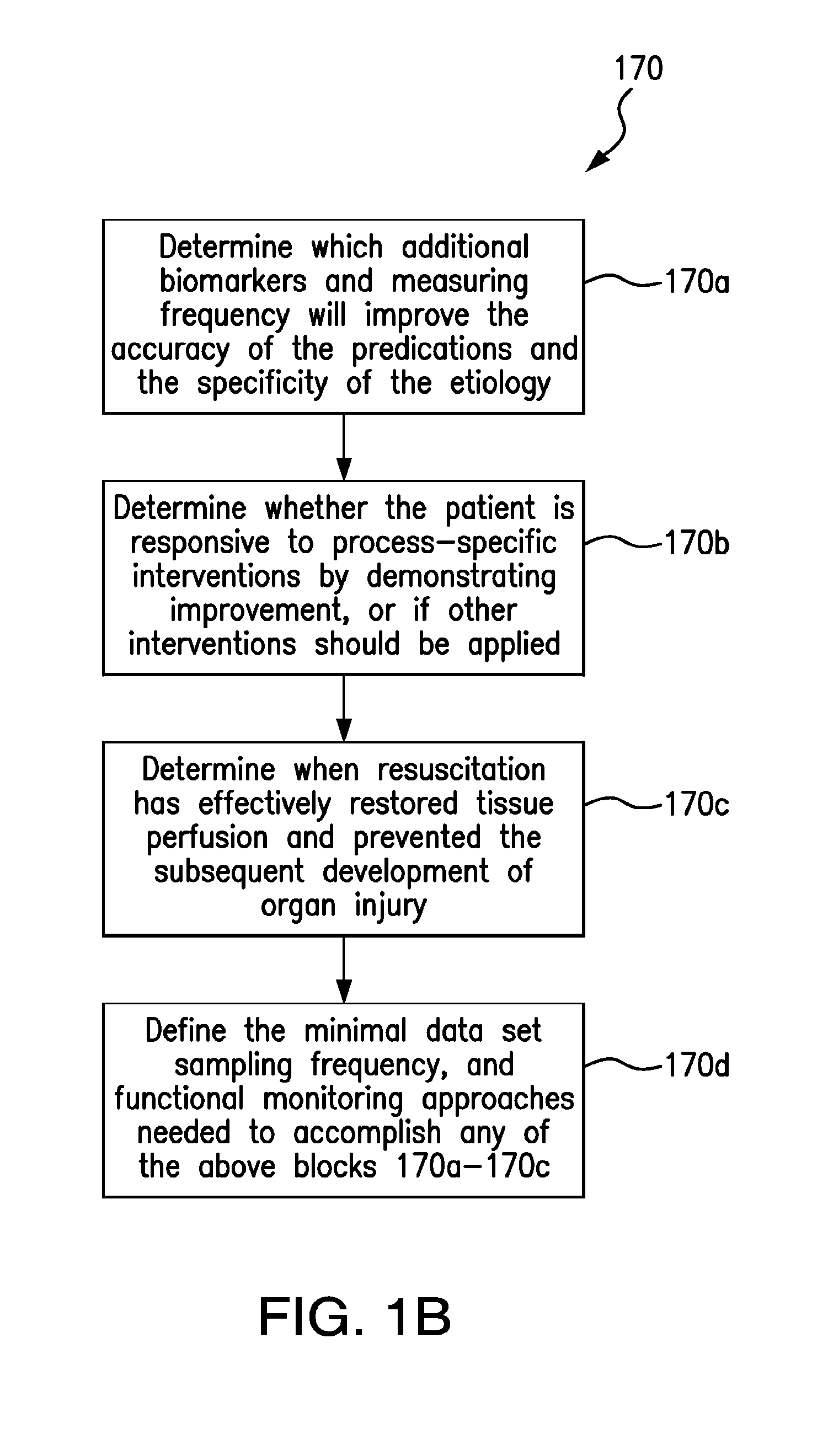System and method of determining a susceptibility to cardiorespiratory insufficiency
a susceptibility and cardiorespiratory technology, applied in the field of system and method of determining susceptibility to cardiorespiratory insufficiency, can solve the problems of marked increase in mortality, patients in critical care settings are often vulnerable to a significant risk of developing cardiorespiratory instability, and the identification of patients likely to become unstable is crucial
- Summary
- Abstract
- Description
- Claims
- Application Information
AI Technical Summary
Benefits of technology
Problems solved by technology
Method used
Image
Examples
example 1
6. EXAMPLE 1
Physiologic Variable Analysis Between Hemodynamic Stable and Unstable Patients
6.1 Materials and Methods
[0064]We retrospectively analyzed the continuous non-invasive integrated monitored data of 304 patients from a 24-bed step down unit (SDU) in a University-based medical center during 8 weeks from November 2006 to January 2007. HR, RR and SpO2 were sampled every second. Data streams were divided in non-overlapping epochs of 5 minutes. For each epoch, means (EM) and standard deviations (ESD) were computed for HR (EMHR, ESDHR), RR (EMRR, ESDRR), and SpO2 (EMSpO2, ESDSpO2). Instability was defined as any one abnormality of HR140, RR36 and SpO2<85% occurring persistently for 4 minutes. Epochs were classified as stable (S) if obtained from patients with no instability in their entire SDU stay, unstable (U) in the 60 minutes before meeting instability criteria, and pre-unstable (PU) otherwise. EM and ESD were compared across S, U and PU and all post hoc paired comparisons perf...
example 2
7. EXAMPLE 2
Physiologic Variable Analysis Between Hemodynamic Stable and Unstable Patients
[0067]The data in Example 1 was further extended by 3 patients so that 307 patients were considered. In this data set, 78 patients were found to meet the criteria for instability.
[0068]FIG. 5A shows features of derived 5 minute intervals regarding time, frequency and entropy and FIG. 5B is a schematic showing the observation window versus the target window. Table 2, below shows univariate feature statistics across epoch types.
TABLE 2VariableUnstablePre-UnstableStableEMHR86.84 ± 19.53†84.87 ± 18.06*82.82 ± 15.79ESDHR 2.43 ± 1.701†2.61 ± 1.82*3.27 ± 2.56EMRR18.32 ± 6.37†17.51 ± 4.64* 18.71 ± 4.11 ESDRR 2.45 ± 1.522.39 ± 1.42 2.37 ± 1.35EMSpO292.08 ± 6.36†96.53 ± 3.70* 96.16 ± 3.17 ESDSpO2 1.75 ± 2.04†0.95 ± 1.20*1.00 ± 1.14TPHR (×107) 6.39 ± 3.5†6.05 ± 2.87*5.74 ± 2.76TPSpO2 (×107) 6.74 ± 2.39†7.55 ± 2.20*7.49 ± 2.18ApHR0.050 ± 0.036†0.057 ± 0.034*0.065 ± 0.036ApSpO20.024 ± 0.028† 0.01 ± 0.019*0....
PUM
 Login to View More
Login to View More Abstract
Description
Claims
Application Information
 Login to View More
Login to View More - R&D
- Intellectual Property
- Life Sciences
- Materials
- Tech Scout
- Unparalleled Data Quality
- Higher Quality Content
- 60% Fewer Hallucinations
Browse by: Latest US Patents, China's latest patents, Technical Efficacy Thesaurus, Application Domain, Technology Topic, Popular Technical Reports.
© 2025 PatSnap. All rights reserved.Legal|Privacy policy|Modern Slavery Act Transparency Statement|Sitemap|About US| Contact US: help@patsnap.com



